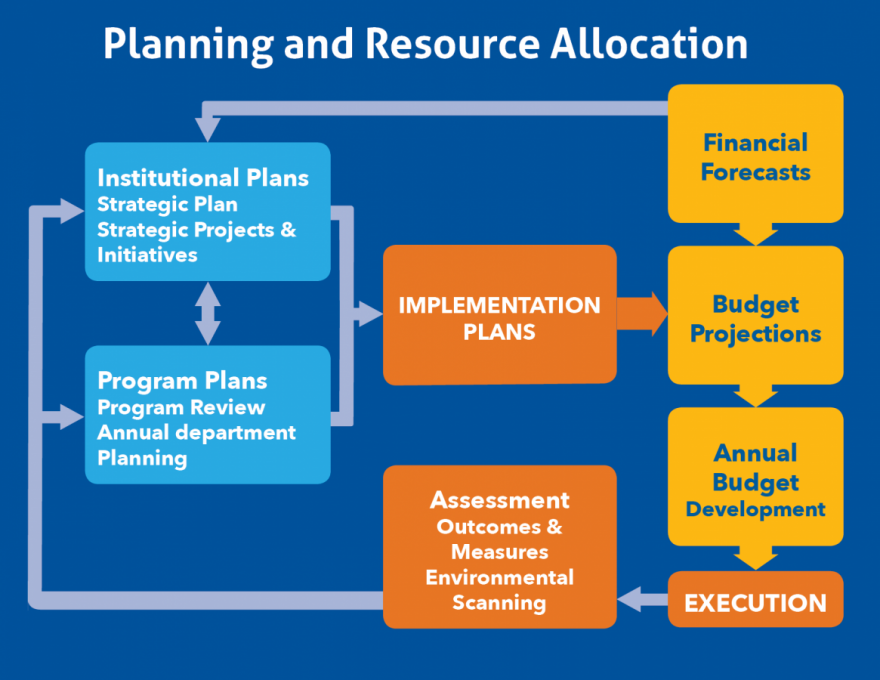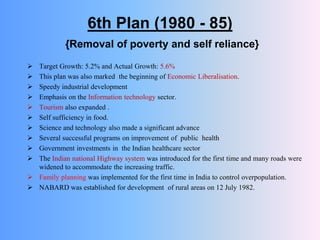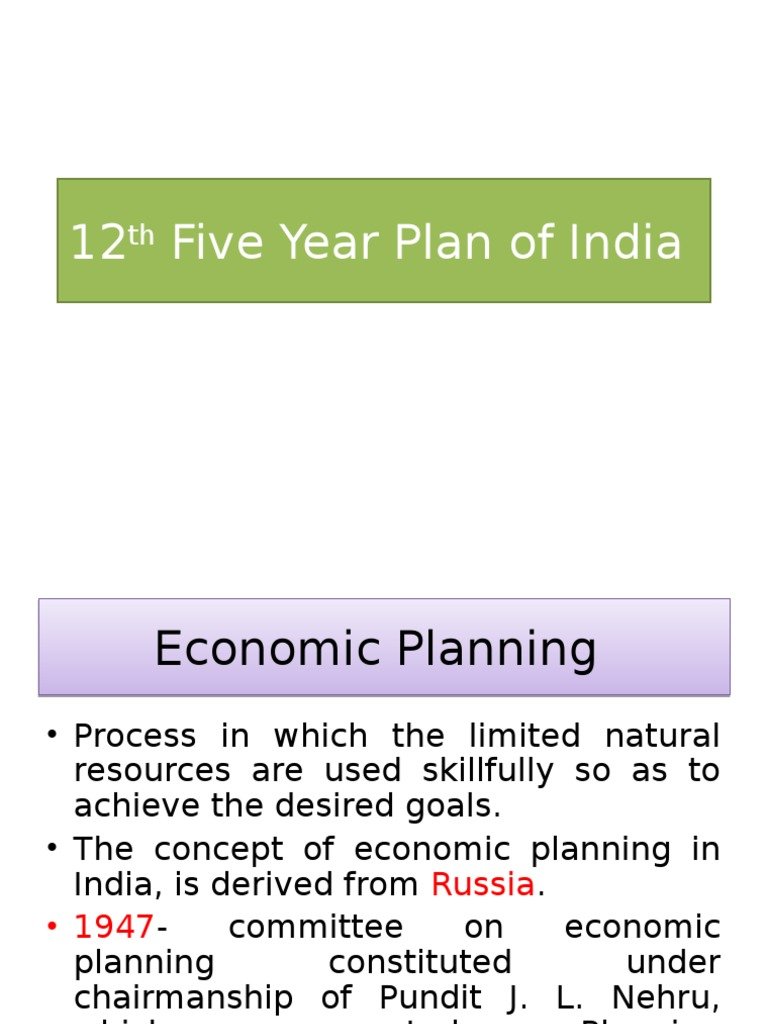Resource Allocation Under India’s First Six Plans
Introduction:
India, a nation of diverse cultures and aspirations, has embarked on a transformative journey of economic development over the years. Central to this journey is the meticulous planning of resource allocation, a cornerstone in shaping the destiny of a burgeoning nation. Let’s delve into the intricacies of resource distribution under the first six Five-Year Plans, each a chapter in India’s pursuit of progress.
Table of Contents
The Blueprint of Growth
The inception of planning in India can be traced back to the launch of the First Five-Year Plan in 1951. Crafted with precision, it aimed to boost agriculture, develop basic infrastructure, and lay the foundation for industrialization. A lion’s share of resources was allocated to agriculture, recognizing its pivotal role in the agrarian economy of the time.
In view of the fact that the transport system had been severely run down in the years following Independence, highest allocation was provided for transport and communications. This would be clear from the fact that as much as 26.4 per cent of the total plan allocation of ₹ 1,960 crore went to this sector.
Next in importance came irrigation and flood control followed by agriculture and allied sectors. Since the First plan did not envisage any large-scale programmes of industrialisation, the sector of industry and minerals received only 2.8 per cent of total allocation.

Agriculture Takes Center Stage
Under the visionary leadership of Jawaharlal Nehru, the First Plan allocated substantial resources to agrarian development. Irrigation projects, soil conservation, and modernization of farming techniques became focal points. The intent was clear: to uplift the rural population, enhance productivity, and establish a strong agricultural base.
Infrastructural Resilience
As India’s ambitions soared, so did the need for a robust infrastructure. The Second Five-Year Plan (1956-61) responded to this by directing resources towards the development of power, transport, and communication. Dams, highways, and power plants became symbols of progress, fueling the nation’s march towards self-sufficiency.
The Second Plan was based on the Mahalanobis model which emphasized the adoption of large-scale industrialisation programmes in the country and a strategy of planning aimed at relatively faster development of heavy capital goods and investment goods industries.
Accordingly, the share of industry and minerals was raised to 20.1 per cent of total expenditure.
Industrialization Unleashed
The Third Plan (1961-66) ushered in an era of rapid industrialization. Resources were strategically allocated to foster the growth of industries, with an emphasis on heavy and capital-intensive sectors. This shift aimed to reduce dependence on imports, fortify the economy, and create job opportunities for a burgeoning workforce.
The most significant structural change in the industrial sector that took place in the first fifteen years of planning was the increased share of resources allocated to the basic capital goods industries vis-à-vis the consumer goods industries.

Social Welfare Takes Center Stage
As the Fourth Plan (1969-74) unfolded, a paradigm shift was evident. Social welfare and poverty alleviation became core objectives. Resources were redirected towards education, healthcare, and poverty reduction programs. The plan sought to address the socio-economic disparities that lingered despite strides in industrialization.
The Green Revolution: Agricultural Triumph
The Fifth Plan (1974-79) marked a milestone with the Green Revolution. Resources were channeled to modernize agriculture through the introduction of high-yielding varieties, irrigation, and fertilizers. This revolutionary approach propelled India towards self-sufficiency in food production, rewriting the narrative of agricultural productivity.
The Sixth Plan: Striking a Balance
The Sixth Five-Year Plan (1980-85) aimed to strike a balance between economic growth and social justice. Emphasis was placed on achieving equitable distribution of resources and addressing regional imbalances. This plan recognized the importance of inclusive development, acknowledging that progress must reach every corner of the nation.
Challenges and Triumphs
While the first six plans laid a strong foundation for India’s economic development, challenges persisted. Bureaucratic inefficiencies, external shocks, and global economic fluctuations posed hurdles. Despite these challenges, the plans showcased India’s resilience and determination to chart its own course.
Lessons for the Future
Reflecting on the first six plans provides valuable insights for the future. Balancing economic growth with social welfare, empowering rural communities, and investing in infrastructure remain key pillars. As India continues to evolve, it must draw inspiration from its past, learning from both successes and shortcomings.
In conclusion, the resource allocation under the first six plans in India was a dynamic journey of nation-building. From the agricultural focus of the First Plan to the balanced approach of the Sixth Plan, each phase contributed to India’s progress. As we stand at the cusp of a new era, the lessons from these plans serve as a compass, guiding the nation towards a future of sustainable and inclusive development.

India’s Resource Allocation Journey in the Seventh to Eleventh Plans
In the grand tapestry of India’s economic evolution, the Seventh to Eleventh Five-Year Plans form a crucial chapter. This period witnessed a dynamic shift in resource allocation strategies, responding to the ever-changing landscape of a growing nation. Join me as we navigate through these plans, each a step forward in India’s journey towards prosperity.
Seventh Plan (1985-90): A Thrust on Modernization
The Seventh Plan marked a departure from its predecessors by emphasizing modernization and technological advancement. A considerable chunk of resources was directed towards industries and infrastructure, aiming to foster a self-sustaining economy. This plan laid the groundwork for economic liberalization, setting the stage for the transformative years that followed.
Eighth Plan (1992-97): Liberalization Unleashed
The winds of change blew stronger during the Eighth Plan, coinciding with India’s tryst with economic liberalization. The focus shifted towards market-oriented policies, opening doors for foreign investments and private enterprises. This shift in resource allocation aimed to fuel economic growth by harnessing the potential of a liberalized economy.
Ninth Plan (1997-2002): Inclusive Development in Focus
Recognizing the need for inclusive growth, the Ninth Plan directed resources towards social sectors such as education, healthcare, and rural development. The aim was to bridge the socio-economic divide and empower marginalized communities. This plan laid the groundwork for a more equitable distribution of resources, acknowledging that progress must reach every stratum of society.
Tenth Plan (2002-07): Bridging Infrastructure Gaps
The Tenth Plan continued the focus on infrastructure development but with an increased emphasis on bridging regional disparities. Special attention was given to connectivity, power generation, and rural infrastructure. This strategic allocation aimed to ensure that the benefits of progress were not confined to urban centers but reached the farthest corners of the nation.
Eleventh Plan (2007-12): Sustainability Takes Center Stage
As environmental concerns gained prominence globally, the Eleventh Plan incorporated a sustainable development agenda. Resources were allocated to sectors promoting environmental conservation, renewable energy, and inclusive growth. This plan recognized the importance of balancing progress with ecological responsibility, laying the foundation for a greener and more sustainable future.

Challenges Amidst Progress
While these plans were marked by significant strides, challenges persisted. Implementation bottlenecks, bureaucratic hurdles, and external economic factors posed hurdles to the seamless execution of proposed initiatives. However, the resilience of India’s spirit prevailed, steering the nation forward despite the obstacles.
Lessons Learned and Unlearned
Reflecting on the Seventh to Eleventh Plans, we glean lessons that guide India’s future endeavors. The balancing act between economic growth and inclusive development emerged as a recurring theme. The importance of adaptability, as evidenced by the shift towards liberalization, remains a crucial takeaway. It’s clear that resource allocation strategies must evolve to align with the ever-changing dynamics of a growing economy.
Looking to the Future
As India stands on the cusp of a new era, the learnings from the Seventh to Eleventh Plans provide a roadmap. Balancing economic growth, social inclusivity, and environmental sustainability must continue to be at the forefront of resource allocation strategies. The nation’s journey is far from over, and the ability to learn, adapt, and innovate will shape the trajectory of India’s progress.
In conclusion, the resource allocation under the Seventh to Eleventh Five-Year Plans epitomizes the resilience and adaptability of a nation navigating the complex waters of development. As India charts its course into the future, these plans serve as beacons, illuminating the path towards a more prosperous, inclusive, and sustainable tomorrow.